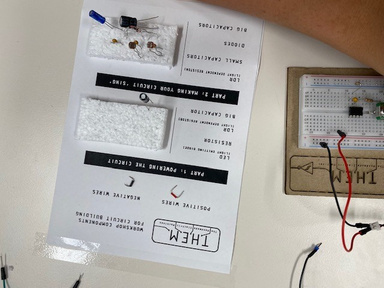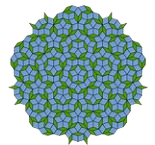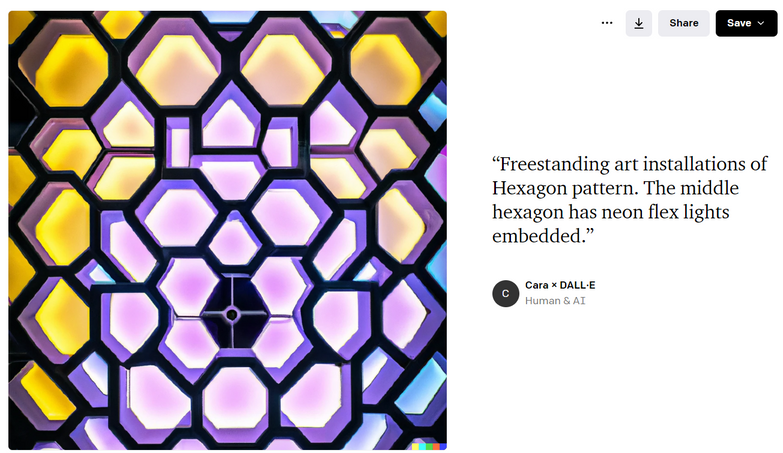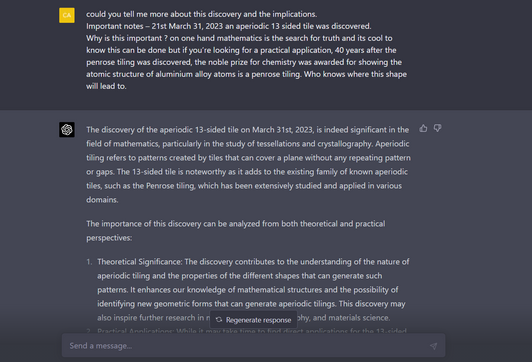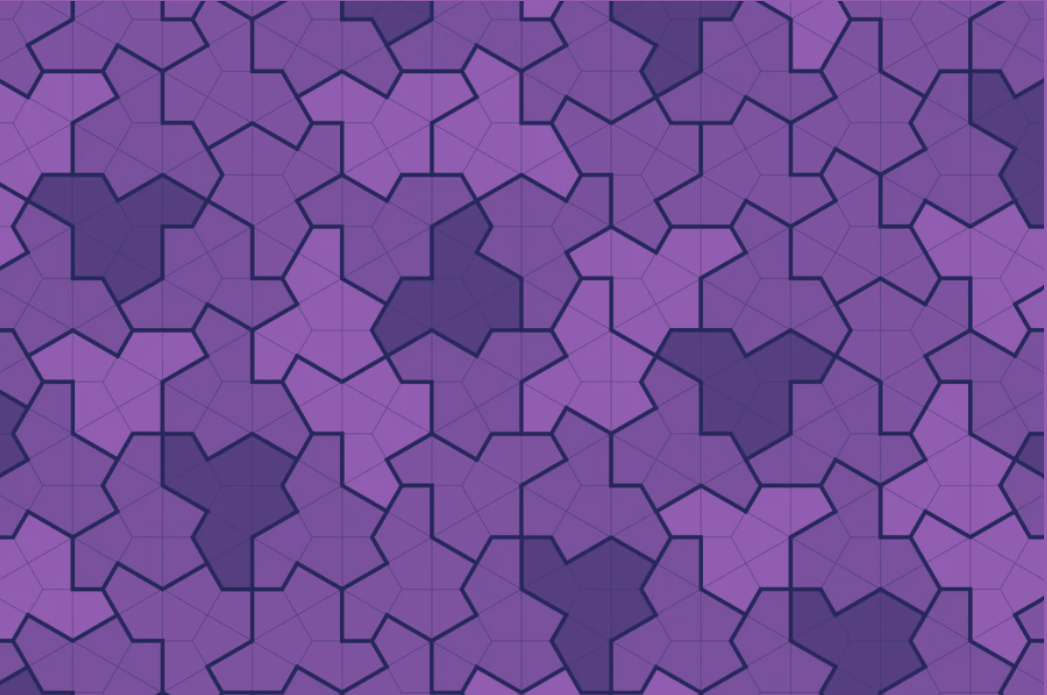
An Interactive Celebration of Aperiodic Tessellation
Kinetic and Interactive Mechanics (2661QCA_3231)
PROJECT PLAN by Cara
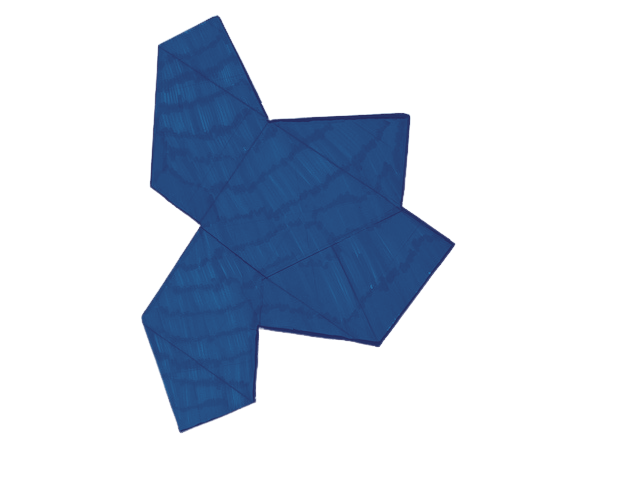
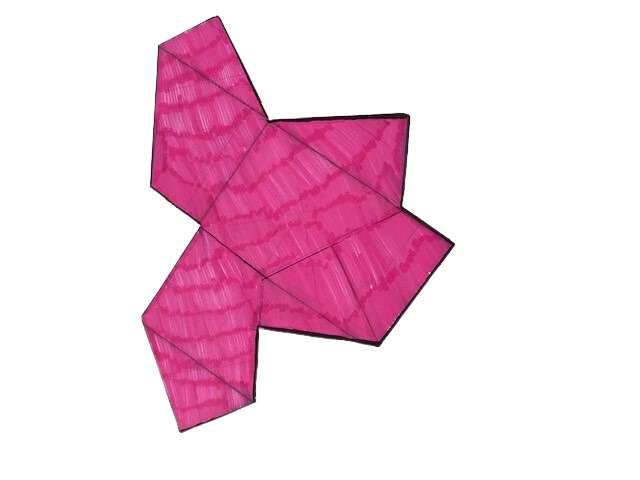
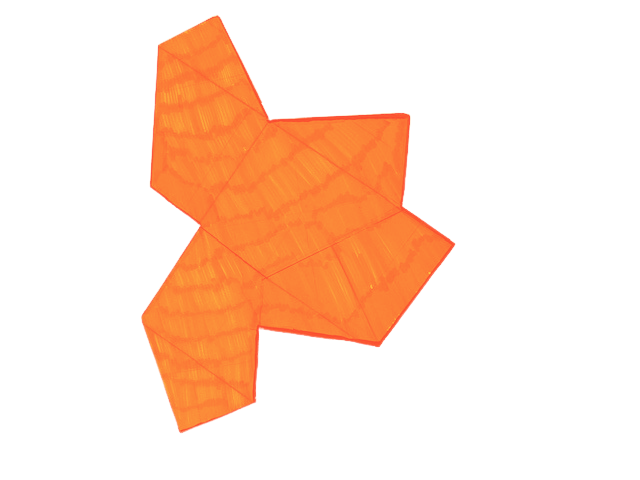
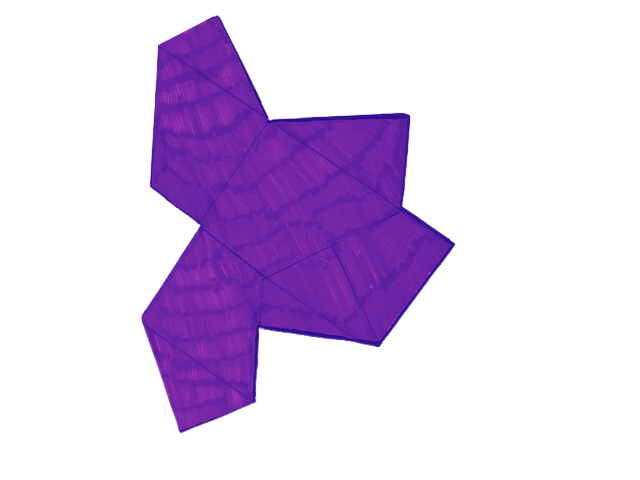




An Interactive Aperiodic Tile Installation
The recent discovery of the aperiodic Éinstein shape has opened new doors in the world of mathematics, geometry, and design. This 13-sided monotile, derived from a hexagon (Thank the bees!) can tessellate the plane in a non-repeating pattern, offers an exciting opportunity to explore interactive installations that captivate audiences. The project, "Honeycomb Harmony," celebrates the Éinstein shape's unique geometry by incorporating it into an interactive wall structure that responds to the viewer's engagement with honey. By stirring honey, viewers activate a series of interconnected mechanisms, which in turn trigger a fascinating display of lights, sounds, and moving tiles.


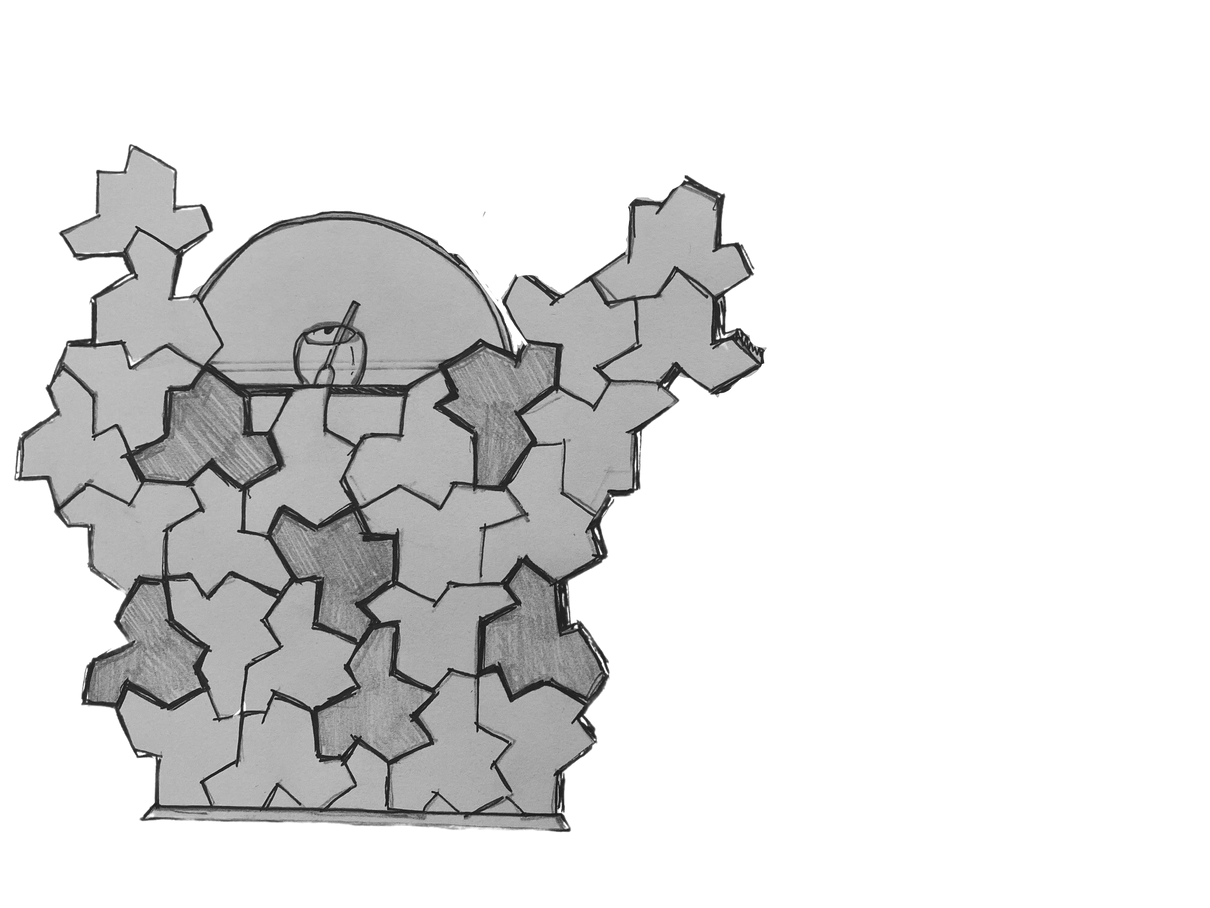
Honeycomb harmony
This design attempts to create an interactive wall installation inspired by the 13-sided aperiodic Éinstein shape that activates through the stirring of honey, combining the beauty of geometry, the charm of nature, and the engagement of the audience.

Research into kinetic and interactive designers
Throughout the world of interactive and kinetic installations, numerous designers have made their mark, captivating audiences and pushing the boundaries of technology and art. One such pioneer is Theo Jansen, a Dutch artist who creates mesmerizing, wind-powered kinetic sculptures known as Strandbeests. These large, mechanical creatures made of PVC tubing roam the beaches, showcasing a unique combination of engineering and artistic vision.
– Theo Jansen
In a similar vein, London-based collective rAndom International has developed the Rain Room, an interactive installation that allows visitors to experience walking through rain without getting wet, thanks to a network of sensors and real-time water control. These designers, among many others, exemplify the power of integrating technology and creativity to craft immersive experiences that challenge our perceptions and provoke a sense of wonder.

Research
During my research, I utilized tools like ChatGPT, Dalle-2, and Canva for ideation and visual representations, while studying academic papers on aperiodic and Penrose tiles. Additionally, I attended the T.H.E.M (The Handmade Electric Machines) workshop by Interactive Media Collective and Griffith University, where I learned about human-powered electronic sound sculptures and sustainable design practices. This hands-on experience and knowledge inspired my interactive and kinetic installation project.
T.H.E.M Workshop
Mathematic Discovery
Image Generator Ideation
Chat GPT 4 Discussion

Design and fabrication
The wall structure will be made from 3mm thick plywood, standing at 1600mm tall and 1000mm wide, with a depth of 300mm to accommodate the electronics and mechanical components. The pattern on the wall will be based on the 13-sided aperiodic Éinstein shape. A shelf will be located at a height of 1200mm, holding a jar of honey and a spoon for stirring. When the viewer stirs the honey, a hand motion sensor activates the installation.
A hexagon-shaped frame surrounding the shelf will light up, and a buzzing sound resembling bees will play. The motion sensor also activates a motor with a gear that interlocks with a belt, causing six of the wall's tiles to push out and then retract.
The mechanical elements, such as the shaft with attached tiles and interlocking gears, will be fabricated from 3mm plywood. The shaft will have teeth approximately 10mm in size, interlocking with the gear to push the tile out about 80mm before retracting.

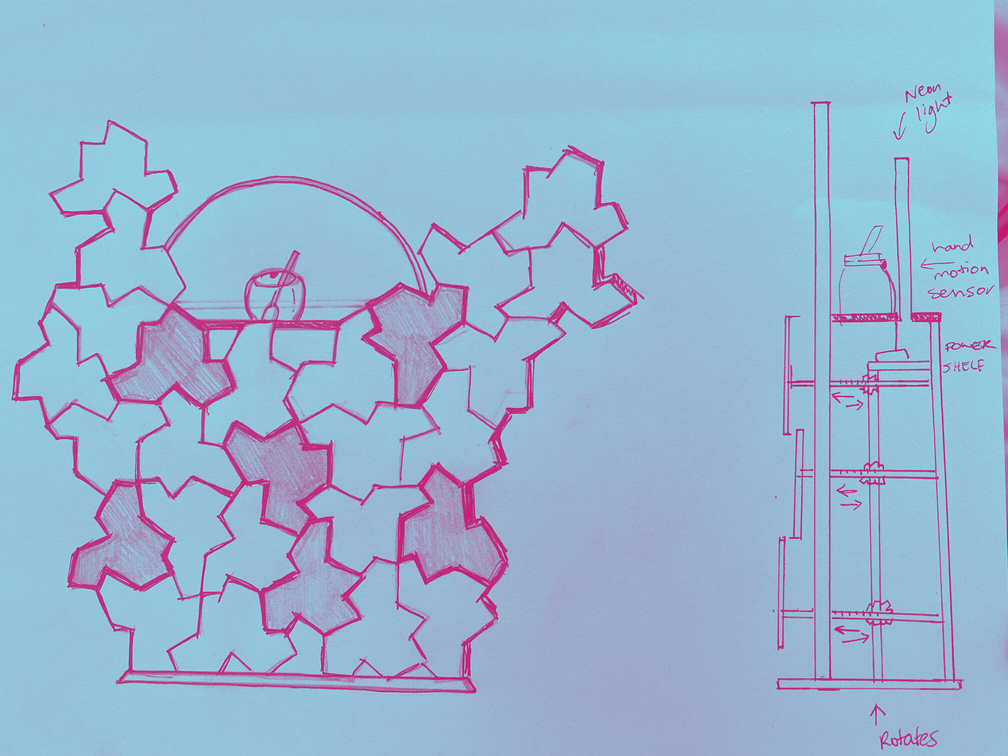
HAND SKETCH FRONT AND SIDE
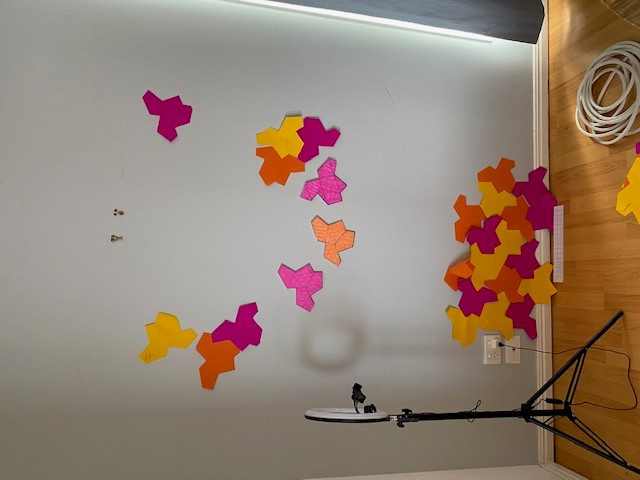
SPACING OUT THE DESIGN

prototyping models
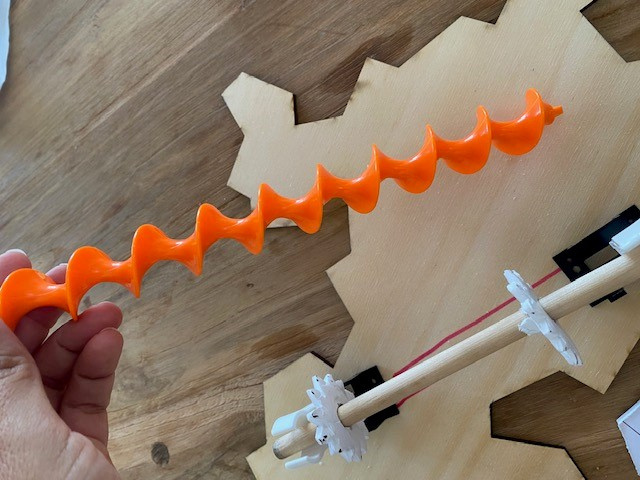

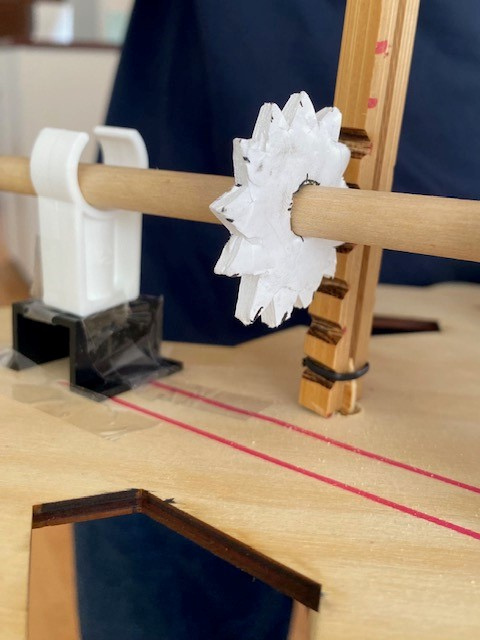
The initial design concept revolved around shapes that extended and spun. However, after consulting with engineers, it became evident that the cost, time, and complexity associated with this idea rendered it less viable.
Alternative concepts were explored, such as having shapes spiral outwards. A 3D printed plastic spiral was considered, but the idea was ultimately discarded due to various factors. The design process's iterative nature allowed for continuous refinement of concepts based on feedback from experts and evaluation against project requirements, resulting in a final design that balanced functionality, aesthetics, and feasibility.

prototyping
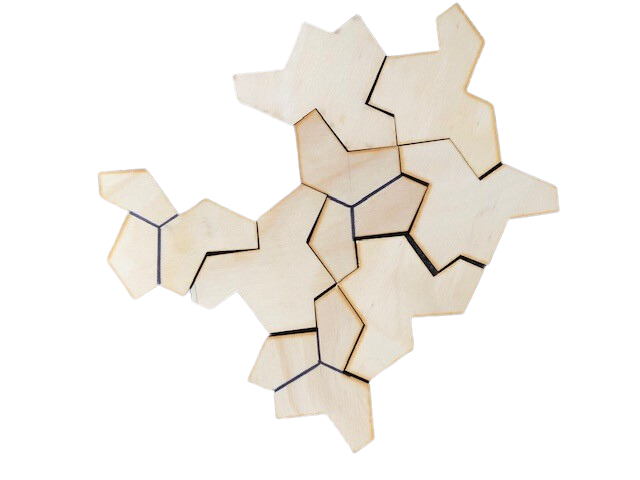
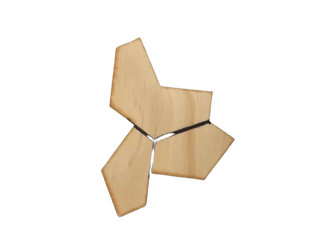
Lazer cut tiles formed together as a potential formation for the design. This design would have had hexagons etched into the shapes. The focus would be on the transormation from hexagon to einstein shape.
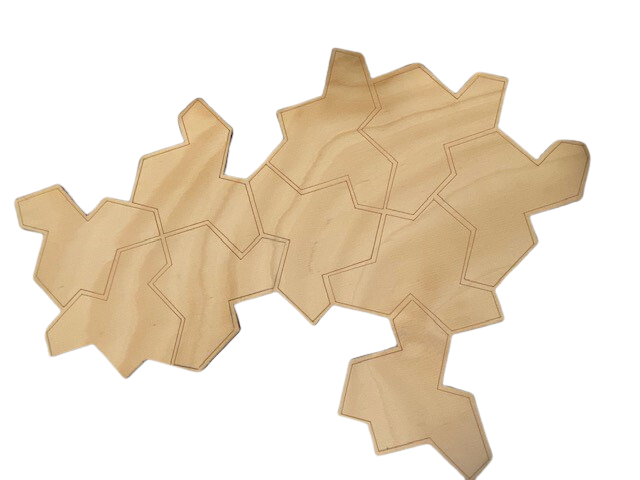
One lazer cut piece with etching. The final model would be 1600mm tall, 1200mm in length and 300mm deep with another wall to stabalise the structure and hide inner workings.

prototyping
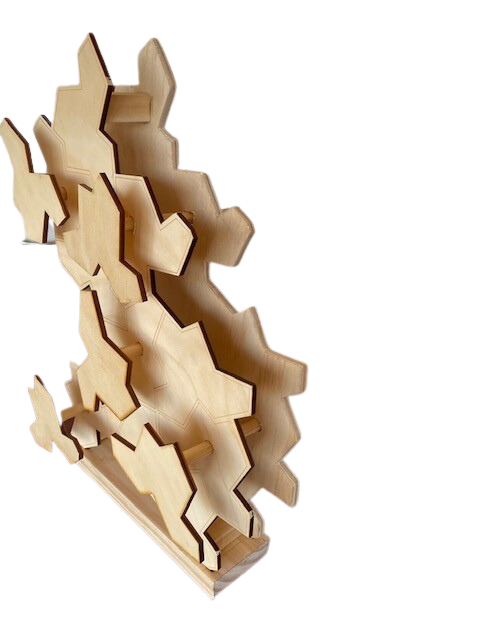
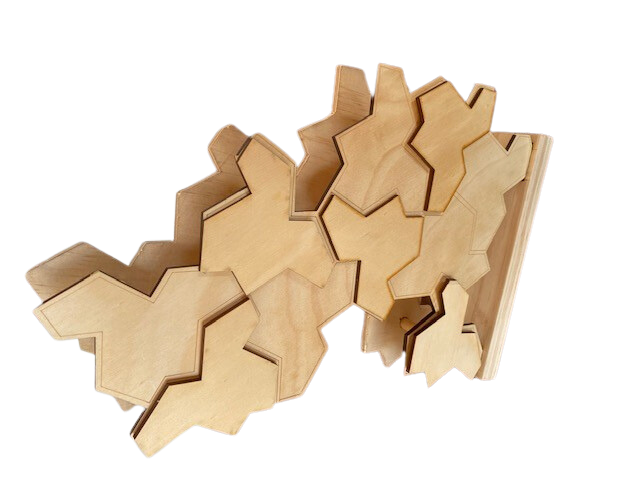
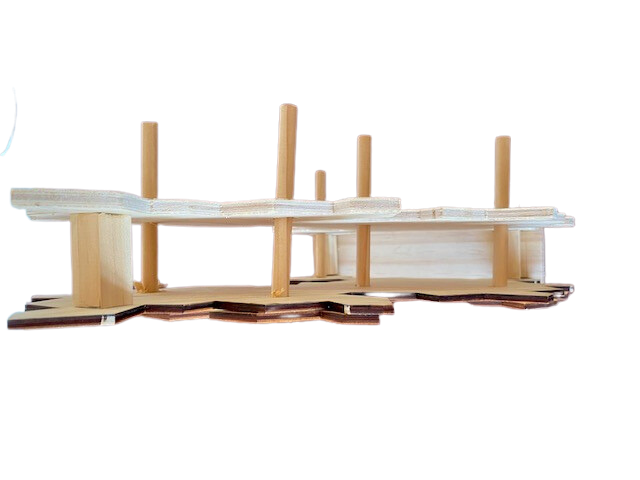
Testing the hand motion sensors by stirring the honey pot. .
Testing:
Stirring the pot activates the hand motion sensor
which triggers the LED strip lights.
Electronics and programming
The installation will be powered by batteries and controlled using micro:bits. The hand motion sensor, motor, light, and sound components will be connected to the micro:bits for seamless operation. The micro:bits will be programmed to detect the stirring motion, activate the lighting, play the buzzing sound, and control the motor responsible for the tiles' movement.
When the hand motion sensor detects stirring, it sends a signal to the micro:bits, which in turn activates the motor, light, and sound. Careful programming of the micro:bits will be crucial to ensure a responsive and engaging experience for the viewer.

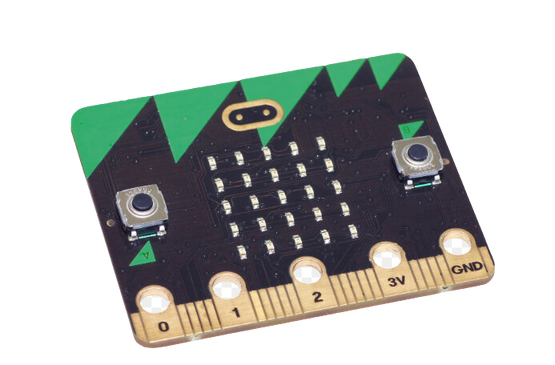

Electronic Components
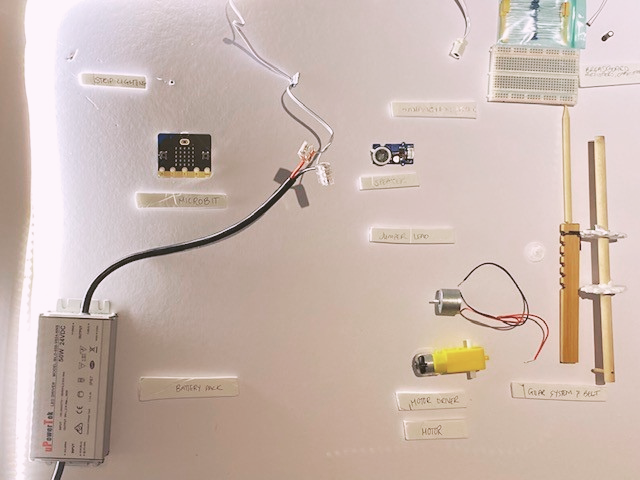
- Micro:bit microcontroller - This will be the main controller for the installation, programmed using Python on the micro:bit website.
- Hand motion sensor (e.g., PIR sensor or IR proximity sensor) - This sensor will detect the stirring motion and trigger the other components.
- Strip lighting (e.g., LED strip lights) - The strip lighting will illuminate the hexagon frame surrounding the shelf when activated.
- Motor (e.g., stepper motor or servo motor) - The motor will be responsible for driving the tile out and bringing it back.
- Motor driver (if required, depending on the motor choice) - The motor driver will help the micro:bit control the motor more efficiently.
- Gear system and belt - These mechanical components will transfer the motion from the motor to the tiles on the wall.
- Sound module or speaker with an amplifier - This will be used to play the buzzing bee sound when activated.
- Resistors, capacitors, and other passive components - These components may be needed for signal conditioning and voltage regulation.
- Jumper wires and breadboard - These will be used for prototyping and testing the electronic connections.
- Battery pack - This will provide power to the micro:bit and other electronic components.
- Micro:bit edge connector or breakout board (optional) - This can be helpful for easily connecting the micro:bit to other components.

code
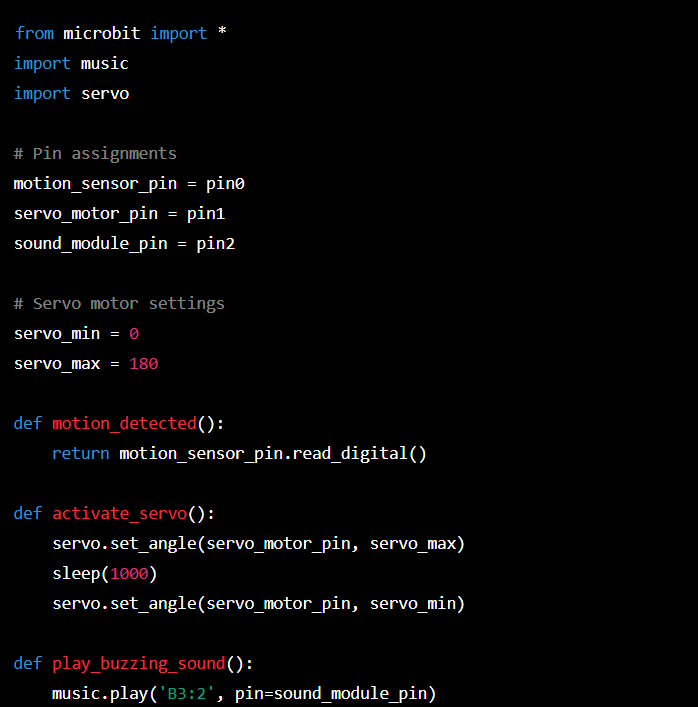
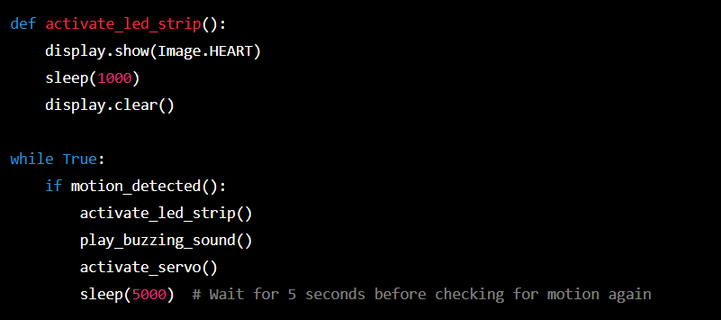
This code sets up the micro:bit to read the motion sensor, control the servo motor, play a buzzing sound, and activate the LED strip. When motion is detected, it will activate the LED strip, play the sound, and move the servo motor accordingly. After the actions are completed, the program waits for 5 seconds before checking for motion again.
On the final project I'll need to install additional libraries, such as the "servo" library, and adjust the settings (e.g., pin assignments, servo angles, and sound) to match specific components and requirements.
The interactive experience
The "Honeycomb Harmony" installation aims to provide an immersive experience for the viewer by combining visual, auditory, and tactile elements. By stirring the honey, the viewer becomes an active participant in the installation, directly influencing the wall's lights, sounds, and moving tiles.
The integration of the aperiodic Éinstein shape, the natural charm of honey, and the interactive experience creates a unique and captivating installation that not only celebrates the beauty of geometry but also encourages viewers to explore and engage with the art.




Conclusion.
"Honeycomb Harmony" is a one-of-a-kind interactive installation that celebrates the groundbreaking discovery of the aperiodic Éinstein shape, while also incorporating the natural charm of honey and the engagement of the audience. By combining innovative design, electronics, and mechanical elements, the installation provides a captivating experience for viewers, allowing them to directly interact with the art and influence its display.
Careful planning, design, and execution will be essential to the project's success, ensuring that the final installation is visually appealing, interactive, and educational. Through "Honeycomb Harmony,"

